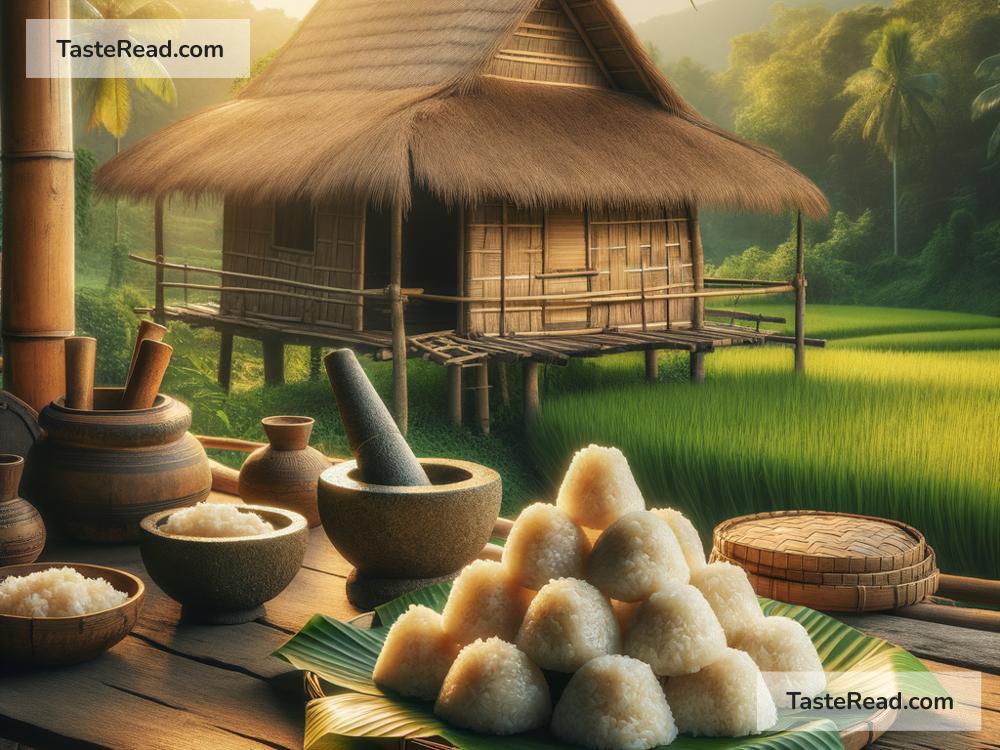Origins of the First Rice Ball: A Tale from Ancient Times
Rice balls, also known as onigiri or omusubi in Japanese, are beloved snacks enjoyed all over the world today. Whether stuffed with savory fillings, wrapped in seaweed, or served plain, rice balls are known for their simplicity and versatility. But have you ever wondered where rice balls come from? Though it’s hard to pinpoint the exact moment this humble creation was born, ancient tales and historical records give us clues about the origins of the first rice ball.
A Humble Beginning
Rice has been a staple food in many parts of Asia for thousands of years, and its history can be traced back over 8,000 years to China. Over time, rice spread to other countries, including India, Japan, Korea, and Southeast Asia, becoming the heart of many cuisines. It was easy to grow, rich in nutrients, and filling—perfect for feeding large groups of people.
But rice was traditionally cooked loose, like grains or porridge, making it less portable for travelers, soldiers, or farmers who spent long hours outside their homes. People needed a way to make rice easier to carry and eat on the go. This is where the idea of shaping rice into balls might have sprung up.
Ancient tales tell us that rice balls weren’t invented by an individual but rather evolved naturally from practices of everyday life. When someone realized that cooked rice could stick together when pressed, it became possible to shape it into a ball or compact form. This simple innovation marked the beginning of a food revolution.
Japanese Folklore and the Rice Ball Legend
One of the earliest references to rice balls comes from Japan, where they are deeply rooted in culture, history, and folklore. Japanese legends tell of villagers who would prepare rice balls as offerings for the kami (gods or spirits). In Shinto beliefs, rice was considered sacred. People often shaped rice into balls and placed them at shrines as a way to honor the gods and ensure successful harvests.
Another ancient tale features a clever farmer who used a rice ball to escape danger. According to the story, a farmer working in the field saw a small group of bandits approaching. Knowing he couldn’t outrun them, he quickly packed his rice into a ball, pressed it tightly, and tossed it across the field. The bandits, distracted by the food, stopped to eat while the farmer slipped away unnoticed. This folklore explains how rice balls were not only practical as portable snacks but could also serve clever purposes in moments of trouble.
Military Meals: The Role of Rice Balls in History
Rice balls may have gained further popularity during Japan’s Heian Period (794–1185), when aristocrats and warriors carried simple meals for their long journeys. During these times, rice balls were known as tonjiki and were sometimes wrapped in bamboo leaves to preserve them.
The convenience of rice balls became especially important during wartime in Japan. Samurai soldiers needed food that was filling, easy to carry, and durable enough to withstand the rigors of the battlefield. Cooked rice shaped into balls provided the perfect solution. They could be prepared ahead of time, packed into bags, and eaten quickly during breaks.
Historians believe that the early rice balls were plain and simple, made only with pressed rice. Over time, fillings such as salted fish, pickled plums (umeboshi), or even small pieces of meat were added to enhance the flavor and provide more nutrients. The addition of nori (seaweed) likely came much later, as seaweed farming became more widespread during the Edo Period (1603–1868).
Other Cultural Origins of Rice Balls
While Japan has the most famous rice ball tradition, other countries also have their versions of compact rice snacks. In China, zongzi—sticky rice often wrapped in bamboo leaves—has been enjoyed since ancient times. In Korea, jumokbap (literally “fist rice”) refers to rice balls often made for picnics or casual meals. Similarly, rice balls can be found in Southeast Asian cuisines, sometimes flavored with coconut, spices, or fillings inspired by local ingredients.
This shows that shaping rice into convenient, portable forms wasn’t unique to Japan; it was a practical solution shared by many cultures. Each place put its unique spin on the concept, giving rise to variations of this ancient creation.
The Timeless Appeal of Rice Balls
Rice balls are still loved today, not just for their taste but for the stories they hold. They connect us to simpler times when food was prepared with care and ingenuity. While modern rice balls often come in stylish packaging and gourmet flavors, their essence remains the same: a convenient and comforting way to enjoy rice.
As we savor these delightful snacks, it’s fun to think about the farmers, soldiers, and villagers of ancient times who shaped the first rice ball. Whether you buy them at a convenience store in Japan, make them in your kitchen, or try variations from different countries, rice balls are more than just food—they’re a timeless piece of history packed into every bite.
So the next time you pick up an onigiri or taste a homemade rice ball, take a moment to reflect on its humble beginnings. From ancient fields and sacred shrines to bustling modern cities, this small yet meaningful creation carries the weight of centuries of history.


